My notes from Introduction to Marketing (part of Business Foundations Specialization) on Coursera.
Week 1 Marketing strategy and Brand Positioning
Market orientations
| Seller’s Market | Buyer’s Market |
|---|---|
| Focus on company / Product-focused marketing | Focus on customer/segment and competition |
| Sell as much as you can | Go after some customers / say no to others |
| Profitability comes from volume | Profitability comes from creating value for selected customers |
| Wide market | Narrow market / harvest from loyalty |
Product orientation
- Persuade customer to want what the firm has
- Generic products
- Competitive advantage is the lowest cost
- Profitability driver is the market share
Marketing Orientation
- Persuade firm to offer what the customer wants
- Differentiated products
- Competitive advantage is quality/service/customer knowledge
- Profitability driver is customer share/customer loyalty
Experience Orientation
- Manage customer’s entire experience with the firm
- Experiential value
- Competitive advantage is transformtaion/customer as co-creator of value
- Profitability driver is buss/referrals
Trust Orientation
- Prioritize building a relationship of trust and discipline
- Genuine value
- Competitive advantage is trust
- Profitability driver is discipline
Principle of Marketing
3 Principles of Marketing
- Principle of Customer Value
- Principle of Differentiation
- Principle of Segmentation, Targeting, and Positioning
4 P’s of Marketing
- Product
- Place (physical, online)
- Promotion (advertising, sales)
- Price
Market-Driven Principles
- Know your Markets
- Customers have the final say
- Commit to being first in the markets you serve
- Deliver total quality to guarantee customer satisfaction
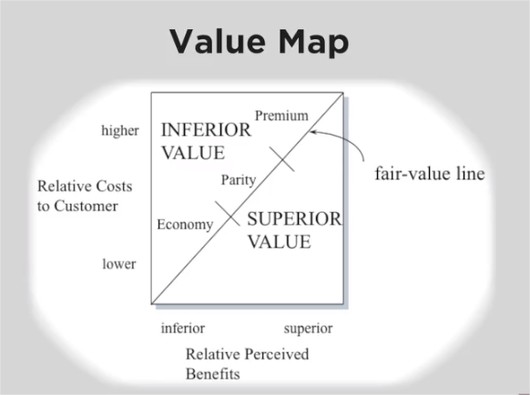 Copyright by Coursera
Copyright by Coursera
Strategies for leadership
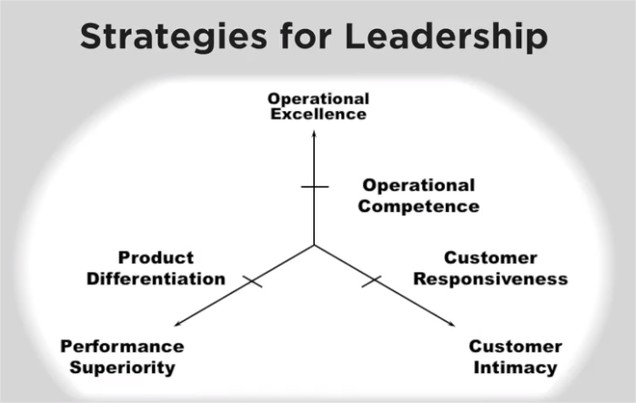 Copyright by Coursera
Copyright by Coursera
- Operational Excellence - e.g. tends to have more strict hierarchy
- Performance Superiority - e.g. innovative R&D company
- Customer Intimacy - “yes” culture / consulting
Segmentation and Targeting
Segmentation
Identify variables that allow one to segment the market
Market Segment is the process of dividing a market into distinct subsets
Targeting
Evaluate the attractiveness of each segment and choose a target segment
Positioning
Identify positioning concepts for each target segment, select the best, and communicate it.
Segmentation Methods
Characteristics of the Customer
Benefits Sought (comfort, asthetics)
Systematic, Product-Related Behaviors (purchasing behavior)
Cohort analysis (Boomers, Gen X, Gen Y)
Geographic segmentation
Zip (post code) clustering
Segment Selection Criteria
- Segment size
- Growth of segment
- Value of Segment
- Stability
- Current company position within segment
- Ease of entry into segment
- Ease of competitive entry into segment
- Number and strength of competitors
Create segment attractiveness study
Brand positioning
What is a Brand?
- A trademark
- A promise of specific benefits
- It is what consumers tell each other
Positioning Statement
- Target Segment (For Whom)
- Point of Difference (Reason to Buy)
- Frame of Reference (Point of Pairity, associations consumer views as necessary to be considered credible)
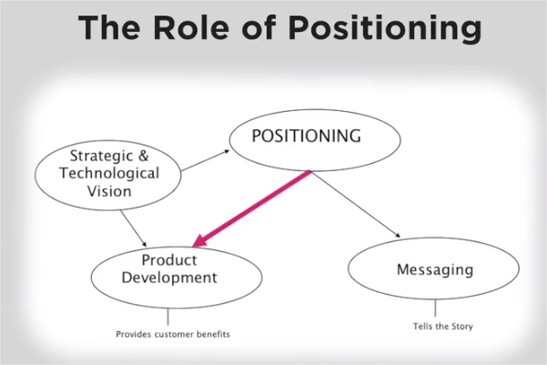 Copyright by Coursera
Copyright by Coursera
The Elevator Speech
- 30 sec elevator speech
- Mental map of what your brand is / all associations
- Mental map -> Core Brand Values -> Brand Mantra
- Short three- to five-work phrases that capture the essence or spirit of the brand positioning and brand values
Designing the Brand Mantra
- Used internally to guide decisions - what the brand is and what it is not
- Brand function - the nature of the product or service
- Descriptive modifier - clarifies service nature
- Emotional modifier - how exactly does the brand provide benefits
Brand Mantra Considerations
- Communicate (define business boundaries)
- Simplify (memorable, short)
- Inspire (higher level of meaning)
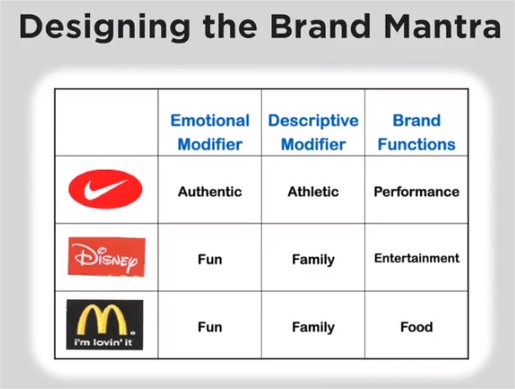 Copyright by Coursera
Copyright by Coursera
Experiential Branding
- Brand stimulates senses, heart and mind
- What do customers get? (sense, feel, think, act, relate)
- Connects the company and the brand to the customer’s lifestyle
- What does the brand stand for?
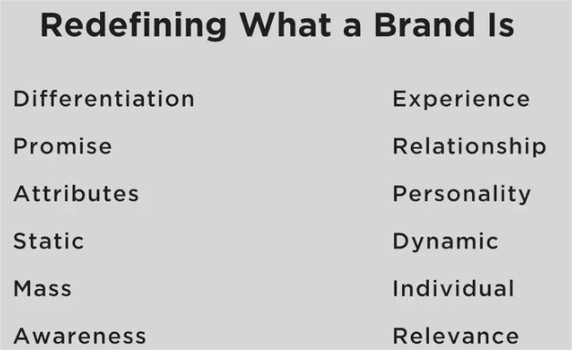 Copyright by Coursera
Copyright by Coursera
Experience within the 4P’s
- Product - build in experiential features
- Place - design, fragrance, music
- Promotion - noteworthy, brand personality
- Price
Characteristics of great brands
- Consistency in delivering in their promise
- Superior products and processes
- Distinctive positioning and experience
- Aligned of all commitments
- An ability to stay relevant
Week 2 Customer Centricity
Product-Centric Approach
- Targets Operational Excellence and Performance Superiority
- The goal of the firm is to maximize shareholder value
- Maximum profits through volume and cost reductions
- Focus on scale
- Key performance indicators such as market share
- Growth through extyending the product
- Product-oriented org structure
- The competitive advantage: product expertise
Cracks in the Product-Centric Approach
- Tech-enabled product development -> commoditization
- Tech-enabled information flow -> smart customers
- Tech-enabled delivery -> retail saturation
- Globalization
- Deregulation
- Customers want “end-to-end solutions”
- Information systems enable customer-level tracking
Customer-Centric Approach
Three Cheers for Direct Marketing
- The individual customer is the unit of analysis
- Know who their customers are and what they buy
- Aim to determine marketing communication based on past purchases
- Constantly determine individual customer value
What is Customer Centricity?
- Targets Customer Intimacy
- Support selected set of customers and get more customers like them
- Maximize long-term financial value
- Align company’s development/delivery activities round selected customers
- Putting valuable customers in the center
- Focus on “Which customers will be valuable in the future?”
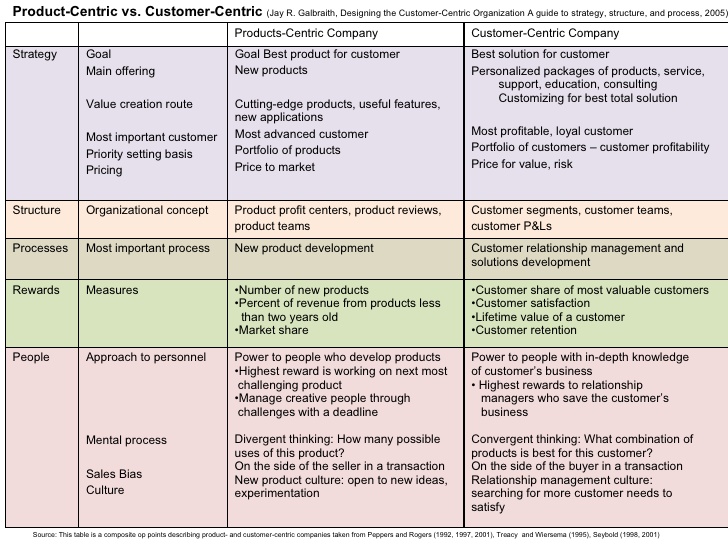
Living in a Customer-Centric World
- The goal of the firm is to maximize shareholder value
- Distinguish the profitable customers from the less profitable ones
- Focus on customer profitability (customer lifetime value CLV) rather than past profits
- Success arises through enhanced customer acquisition, retention, and development
- Customer-centric organizational structure
- The competitive advantage - “relationship expertise” with respect to customers
- No company can be 100% customer-centric
- You don’t want to put “all the eggs in one basket”, you should keep less valuable customers, have a healthy balance
- Being customer-centric with some customers, product-centric with the rest
Week 3 Go to Market Strategies
Online/offline competition
- Delivery times
- Uncertainty about quality/fit
- Cost of returns
Friction
- Search friction (finding better deals take extra time)
- Geographic Friction (products available only at specific location)
- Internet reduces friction of search and geography
The Long Tail
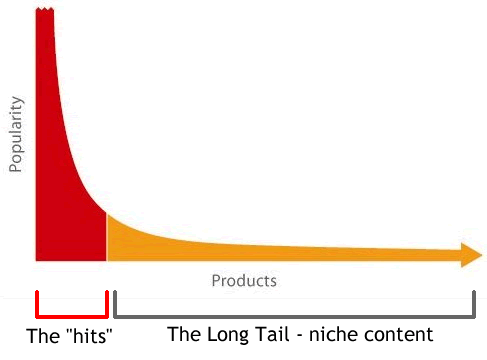
- Popular vs niche products
- You want to keep popular products available quickly (offline)
- Our taste becomes more unique because we get access to more products (long tail), not only the most popular onces
- Online offers wide range of selection (long tail)
- Researchers find out that people buy more niche products over internet due to search, recommendation systems, reviews
- Long tail concept can be applied to geographies (main sales in huge cities, less transaction in smaller towns)
Preference Isolation
- Offline stores focus on satisfying needs of majority
- Online aggregates people with different interests and a store can reach scale
- Customers are more likely to buy online if a local market doesn’t have longer sales distribution
How Internet Retailing Startups Grow
- Customer acceptance of online retail depends on offline shopping costs (closer, faster, …)
- Sales evolution in eCommerce is structured and predictable (transactions happen close to the previous sales due to living close to each other/ talking)
- Migrate from “Good” to “Great” requires expansion to niche products (the long tail)
Customers and Digital Marketing
- Never pay more to acquire than you plan to capitalize CLV (customer lifetime value) > AC (Acquisition rate)
- CLV needs to incorporate RLV (residual lifetime value)
Influence and how information spreads
- Six degrees of separation
- Influence spreading out from you will not go more than 3 steps
Pricing strategies
- By making a recognizable product cheaper you send a message that all other products are at a lower price
- Cents in the price mean that a merchast sqeezed all possible places to make it as cheap as possible
- When $44 becomes less popular than $49 (discount from $50)
- Marginal cost (floor), customer willingness to pay (ceiling), competition drops the ceiling, and what is the amount we need to raise the price from the floor to motivate everyone
- Price sensitivity gets affected by ease of comparison, expenditure, shared expenses, price/quality inferences,
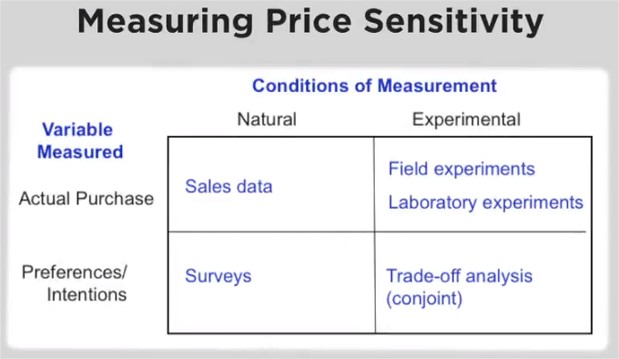 Copyright by Coursera
Copyright by Coursera
5Cs and Pricing
- Customers (price sensitivity; if I raise price by 1% how much will demand decrease; psychological issues)
- Company (consistency in the product line, image, finance)
- Collaborators (what are incentives)
- Competitors (aggressiveness, willingness to respond, position leader or follower)
- Context (market situation)
The 7ms
- Market (who should I talk to?)
- Message (what should I tell them?)
- Mission (what do we intend to achieve?)
- Message Design (how should I say it?)
- Media Strategy (how do I reach them?)
- Money (how much do I need to spend?)
- Measurement (was it worth it?)
Week 4 Branding
Brand Messaging & Communication
- Perception (The process of developing an interpretation of a stimulus, deciding what a stimulus means)
- What customers perceive is what affects their actions
- What is perceived is not necessarily what is “true”
- People construct perceptions on the fly
- We interpret data based on what we know already
- Shape, color, visual illusions, proximity bias (close -> similar), similarity (if its close to a quality product, it must be of good quality as well)
- Brand is not equal to product
Choosing a brand name
- Brand elements (name, logo, symbol, character, packaging, slogan, color)
- Choice criteria (memorable, meaningful, appealing, protectable, adaptable, transferable, )
- Consistence and integration
- Names are the most difficult to change
Effect of brand names
- Consumers
- Employees
- Firm
- Investors
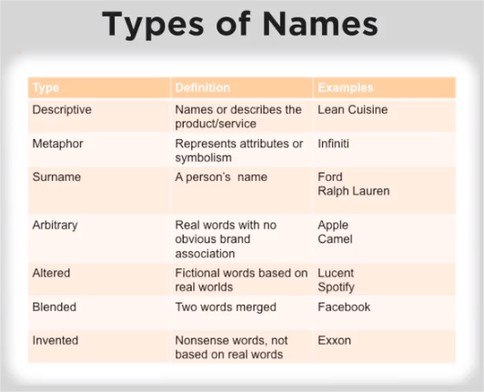 Copyright by Coursera
Copyright by Coursera
Picking brand names is China
- Coca-Cole (Kekoukele - tasty fun)
- Reebok (Rui bu - quick steps)
- Colgate (Gao lu jie - superior cleanliness)
- Cadillac (Ka di la ke - means nothing)
Brand elements
- Rules about color (ultimate goal is to own a color)
- Color can also be used to separate product lines
- Different viewers experience color differently
- Colors can create very strong perceptions (luxury - gold, silver, black, white; gender - blue, pink)
- More “universal” axis (doesn’t change as much from culture to culture) is arousal
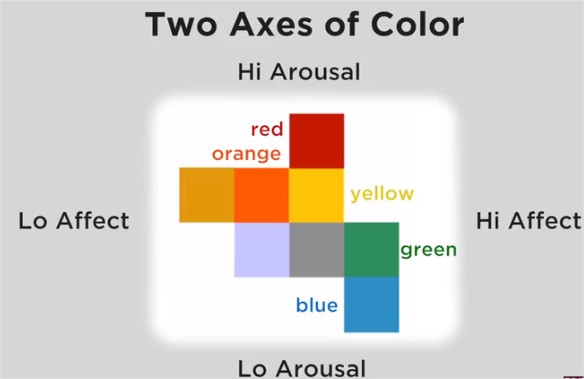 Copyright by Coursera
Copyright by Coursera
Rules about color
- Red - stimulates the appetite, also love, excitement
- Blue - most preffered by men, productive, curbs appetite
- Green - tranquility and health, fertility, money, nature
- Brown - reliability, boredom, practicality
- White - purity, innocence, empty, spacious
- Black - evil, death, mourning, slimming
- Yellow - bright, gives you energy
- Orange - excitement, enthusiasm, caution, warmth
- Lavender - calms the nerves, relaxation
- Purple - royalty, wealth, success, wisdom
- Pink - calming, warm, girl’s color
Slogan/tagline
- Can be tailored to a positioning strategy
- Can remove some the ambiguity associated with brand
- Can generate its own equity/emotion
- Can reinforce the name or symbol
- Easy to say, unique, short
- Can be protected and trademarked
- Imperative (Just do it)
- Descriptive (You’re in good hands)
- Superlative (The ultimate driving machine)
- Provocative (Got milk?)
- Clever (Drivers wanted)
Packaging
- Package influences perception of a product
- Influences not only at the point of purchase, but also at the point of consumption
- Aesthetics and function are both critical
- Know your distribution channel
Persuasion
- An attempt to change belief and attitude
- Central Route to Persuasion (when motivation to use is high)
- Peripheral Route to Persuasion (when motivation to use is low)
- Preipheral cues: classical conditioning, reciprocity (you owe me), consistency (we’ve always done it that way), social proof (everybody’s doing it), liking (love me, love my ideas), authority (just because I say so), scarcity (limited availability)
- Q-rating shows how appealing a celebrity is
- Celebrities = individuals charged with detailed and powerful meanings
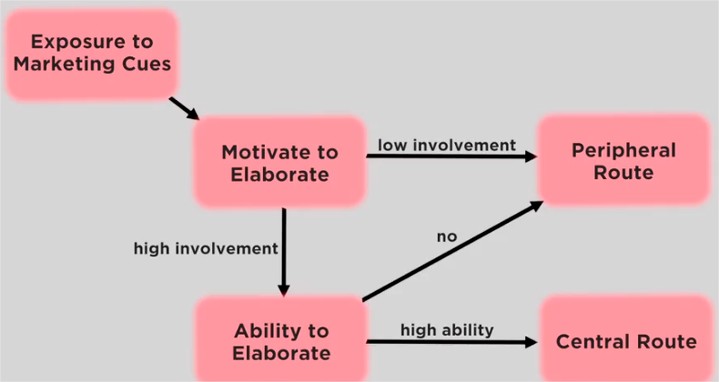 Copyright by Coursera
Copyright by Coursera
Repositioning a Brand
- Brand must be actively managed over time
- Brand should be consistent, otherwise people will rationalize it however they want
- Introducing changes over time (evolving brand/trademarks)
- Consistency over time is very valuable in building strong brands
5 Reasons for Brand Change
- The identity/execution was poorly conceived
- The target for the identity/execution is limited
- The identity/execution has become out of date
- The identity/execution loses its edge, becomes old-fashioned
- The identity/execution has just become “tired”
